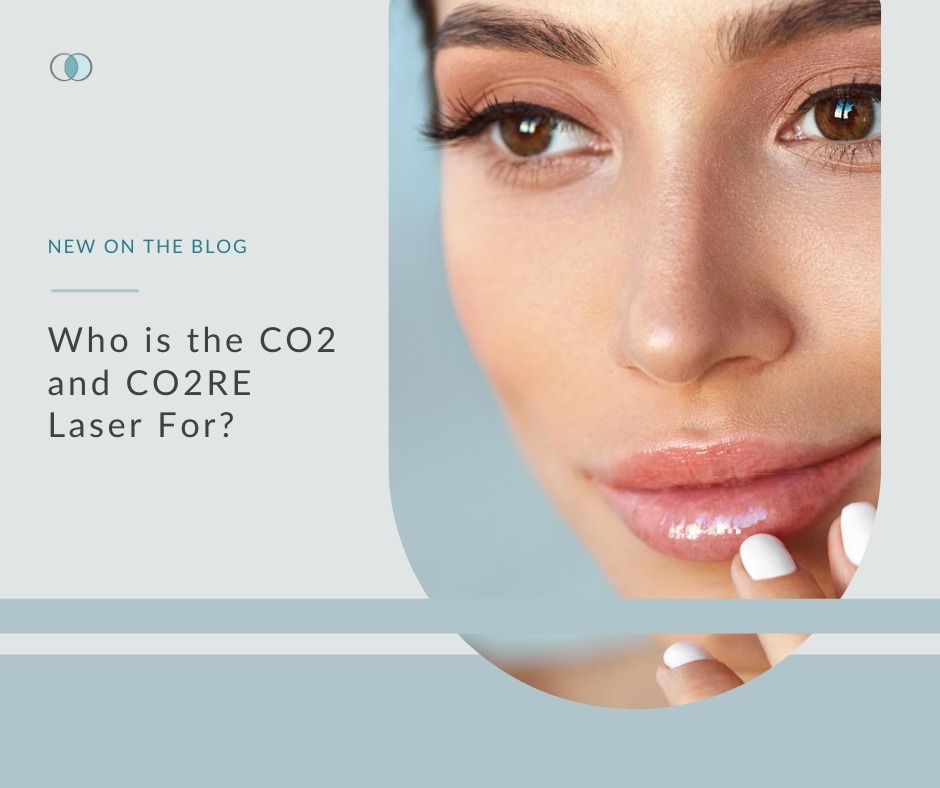
There are many types of lasers available, and we understand that the sheer number of options can be overwhelming. At Palo Alto Laser and Skin Care, CO2 lasers are available but typically only recommended for those with heavy scarring. Many lasers can be tuned up or down to provide customized treatments for patients, but unless you are working to minimize heavy scarring (not typical acne scarring), a different laser might be the best choice for you. However, let’s take a look at the CO2 and CO2RE lasers, how they work, and what they can do.
Zuzana Likar is our resident laser expert and she trains her staff to her high standards, including laser treatment best practices. CO2 laser skin resurfacing uses carbon dioxide (CO2) and an ablative laser to tackle some of the most intense skin issues including scarring, very deep wrinkles, and sometimes warts. Ablative lasers are the most aggressive and they traumatize the skin by removing the epidermis while also heating the skin below the surface (the dermis). This controlled trauma is effective because it kick-starts new collagen production as the skin heals. There are also non-ablative lasers that are gentler and do not damage the epidermis, and instead stimulate collagen synthesis below the surface. As you can imagine, ablative lasers like CO2 lasers have a much longer recovery period than non-ablative laser options.
Who Gets CO2 Lasers?
We often recommend CO2 lasers only for those looking to reduce heavy scarring. However, CO2 lasers can also be effective for treating large pores, age spots, lines and wrinkles, uneven skin tone and texture, and sun damage—though there are other lasers that are not as aggressive that can effectively treat these concerns as well. CO2 lasers are used in a medical dermatological setting to sometimes treat seborrheic keratosis, sebaceous gland hyperplasia, fibrous papules of the nose, and some cysts. Those who tend to form keloid scars may not be a good match for CO2 lasers.
Thanks to numbing creams, a CO2 laser appointment is usually not considered painful. Clients do need to follow after-care instructions closely in order to avoid unnecessary complications and maximize healing. Avoiding hot showers and baths is a must, as is keeping the wound moist and protected with special products that you will be supplied with during your appointment. Taking care of the CO2 laser treated site is very similar to caring for a burn wound since it is ultimately the same mechanism.
What to Expect After a CO2 Laser Treatment
The recovery from a CO2 laser treatment takes 1 – 2 weeks on average. Swelling is to be expected, which often peaks at around day three and largely subsides by day seven. You will probably experience redness and itching, and during the first week oozing and crusting will be found on the dressing. A water-based moisturizer may be recommended for weeks two and three, and an in-office post-treatment skin reconditioning might also be part of your treatment plan.
It’s important to avoid certain products that contain specific acids until the skin is regenerated. Sunscreen should only be used after healing has occurred, which means it’s critical to avoid the sun during the CO2 treatment recovery period. Since CO2 lasers are so relatively aggressive, the results can be excellent for the right candidates who closely follow after-care instructions. Wrinkles are improved 60 – 80 percent on average, with scars improving to a lesser (but still impressive) degree.
The CO2RE Difference: A Single Laser Treating Many Concerns
There are different manufacturers of CO2 lasers, and there’s also the CO2RE laser, a single system that treats multiple concerns. It treats various skin layers in a single pass and can offer both full and fractional (fragmented) resurfacing. The “full-face resurfacing treatment” encourages coagulation and neocollagenesis (new collagen production). It’s different than the CO2 laser because this technology offers various settings, including a fusion setting that maximizes results with just one pass. This means healing periods are reduced by 2 – 3 days compared to the standard CO2 laser treatment.
The “light” setting of this laser may be used on younger patients with minor lines and sun damage, allowing them to get back to their usual routine (including wearing makeup) in 3 – 4 days. Medium treatments require about eight days of downtime.
Getting matched with the right laser or lasers for you will depend on multiple factors, and it’s possible that a CO2 or CO2RE laser will be the best option. However, it’s important to consider the current state of your skin and your goals, including how quickly you want to recover. To get started on your laser journey connect with Palo Alto Laser and Skin Care today by calling the office or completing the online form.
